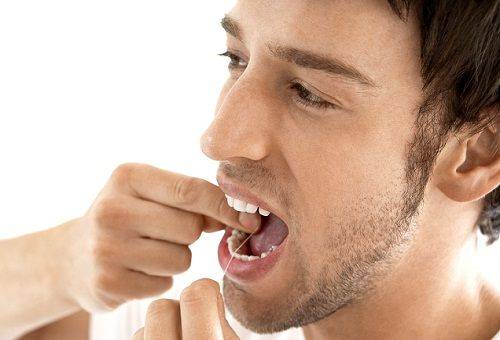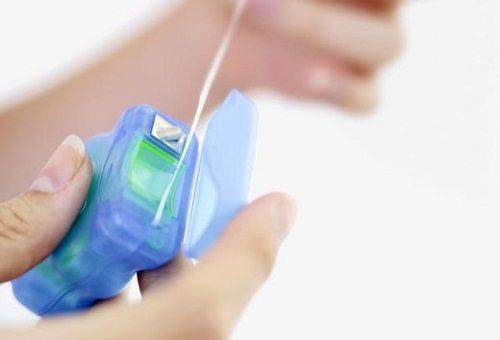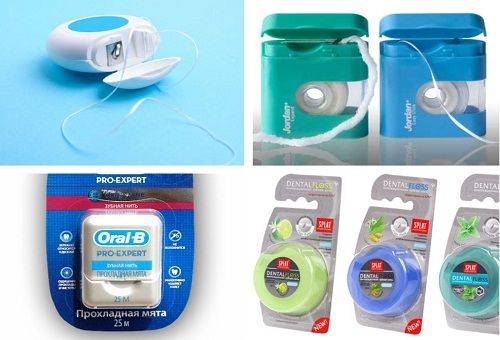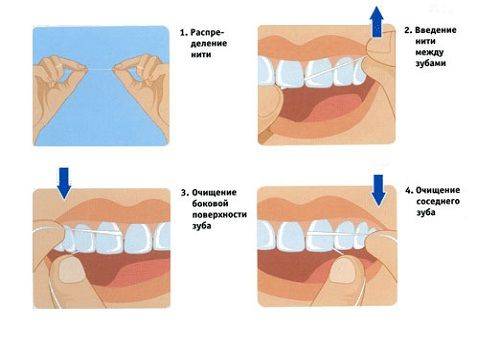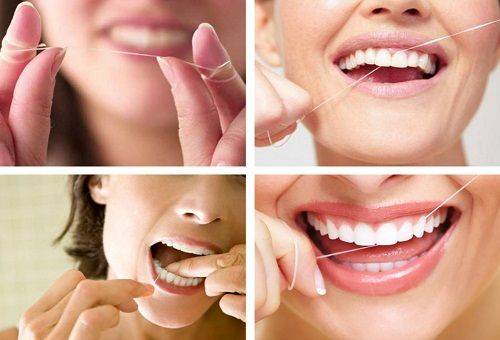Types of floss for cleaning teeth, the rules for their use
Content:
Dentists do not stop reminding about the need for regular use of flosses, but even modern consumers with unlimited access to information resources continue to neglect this effective tool. Those who use devices in everyday life do not always know how to floss their teeth for optimal results.
Even such a simple and safe-looking tool can do harm if not used correctly. Only in combination with high-quality cleaning of the space between the teeth can one count on full-fledged oral care and the prevention of unpleasant conditions.
The purpose of the floss and the recommended regularity of its use
Many do not understand why to use dental floss if daily two-time brushing is carried out, plus quality rinses are additionally used. Unfortunately, even the most advanced toothbrushes are not able to eliminate plaque and food debris between the teeth. And not a single advertised liquid agent will reach these sites to dissolve the substances mentioned. If pieces of food can still be removed with a toothpick, then only special flosses can cope with plaque.
Tip: Many people forget that toothpicks are an emergency aid for bits of food stuck in your teeth. Often, this tool is not recommended because of the high risk of damage to the enamel. Ideally, the use of toothpicks is better to refuse altogether.
Even the multifunctional irrigators so beloved by all - devices that deliver water under impressive pressure, will not cope with the problem the way the thread does. Experts recommend using the device as often as necessary. This should be done after each meal and additional cleansing before bedtime and in the morning after breakfast. After manipulation, the mouth should be rinsed with a softening balm, to prevent irritation and inflammation.
Types of flosses and their features
In order to clean the space between the teeth correctly, you need to understand the existing types of dental floss and their features:
- Round. The standard option, which does not have additional properties, but perfectly cleans problem areas and does not create problems in use.
- Flat. Designed to handle very narrow spaces. They come under the gums very easily, cleaning the surface to the maximum without the risk of tissue irritation.
- With extension. An innovative development that can initially be round or slightly flattened. Upon contact with the tooth and the creation of tension, the thread is flattened, which makes it thinner, and its working surface increases. It allows you to achieve a very fast and high-quality result with minimal irritation of enamel and gum tissue.
- Sprayed. The presence of an additional coating (most often it is represented by wax) allows the thread to glide correctly on the surface. Manufacturers often add breath fresheners to these layers. Today, fluorine-impregnated products that provide an additional therapeutic effect on enamel are very popular.
- With plastic holders. Usually the threads are simply wound around the fingers. Special blades simplify the cleaning process.
- With tips. Most often these are specialized devices designed to clean the space under braces or other orthopedic devices in the oral cavity. The tip is started under the design, which facilitates the processing procedure.
If you choose the right product, then the flossing procedure can be reduced to 2-3 minutes, while obtaining the maximum positive result and without spending a lot of effort.
Dental floss technique - the nuances of the process
Before you floss your teeth, you need to familiarize yourself with the rules of the manipulation. Violation of the recommendations can cause damage to the gums and even thinning of the tooth enamel.
The correct procedure is as follows:
- First you need to rinse the oral cavity with boiled water, saline or a special balm.
- After that, we take a section of floss 40 cm long. It is this floss length that is considered sufficient to treat all teeth, provided that each section will be allocated its own segment of the product.
- We wind one end on the middle finger of the working hand, the second on the middle finger of the second hand. Leave no more than 10 cm of thread for cleaning.
- We introduce the thread into the interdental space, push to the limit, but do not push. Press the floss to the tooth surface and make 5-7 up-down movements. You do not need to move back and forth (only as a last resort, if you get a stuck piece of food).
- We remove the thread, shift the used area and with a fresh tool we clean another area.
According to tradition, processing begins with the upper front teeth, after which the movement goes first in one direction, then in the other direction. After which the same effect is on the lower jaw. When blood appears, you must immediately stop the procedure, rinse your mouth with salt water or an antiseptic. You can resume treatment only after the bleeding stops completely, while applying less force.
